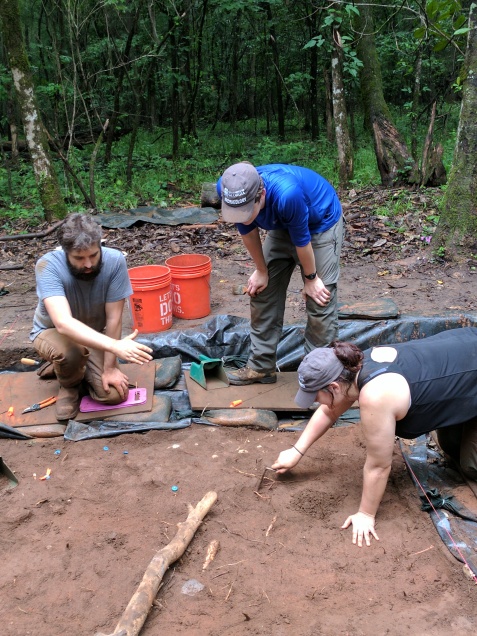In the 2016 field season, a group of undergraduate students and I (Adam Coker) began investigating a potential structure identified in magnetometer data (Carter et al. 2016). We uncovered a hearth feature bounded by white daub and three post molds representing an external wall. This evidence suggested that we did in fact have a structure, but further excavations would be required in order to confirm this hypothesis. This is the aim of this field season.

Adam (left), Flynn, and Julie delineating the hearth feature.
To accomplish this goal, we set seven 2×2 m units over the entirety of the anomaly in order to achieve maximum horizontal exposure of the structure and any intact features. If our hypotheses are correct, this block would encompass the northern half of the structure. Thus far, we have encountered an interesting differentiation of soils in the floor of the excavation block. Along the northern walls of the block, an area we expect to be external to the structure, we have encountered a red soil with increased clay content. In contrast, towards the southern and central portions of the block we have encountered a dark brown sandy soil that contains a greater number of artifacts. This could potentially be the result of infilling a structural basin following the abandonment of the structure. We initially identified this difference in soil types in 2016 as a post-use midden.
As of yet, no additional posts have been identified, but if the differentiation of soils is related to the filling of a structural basin, then post molds may be obscured. Further excavations will likely reveal more information, and it remains likely that post will be observed below this depositional layer.
As excavation continues, we are getting closer to our goal of confirming the presence of a structure and interpreting its function within the greater context of Singer-Moye as a whole.
– Adam Coker


